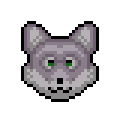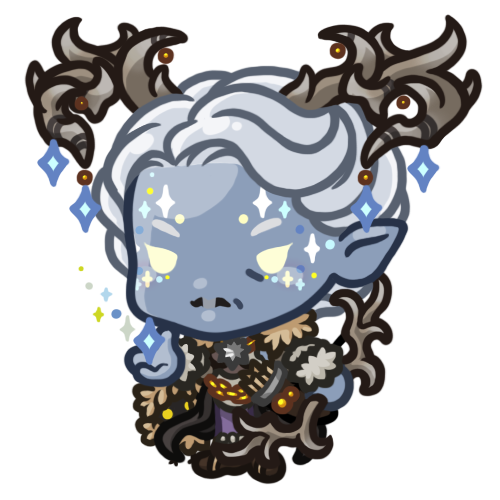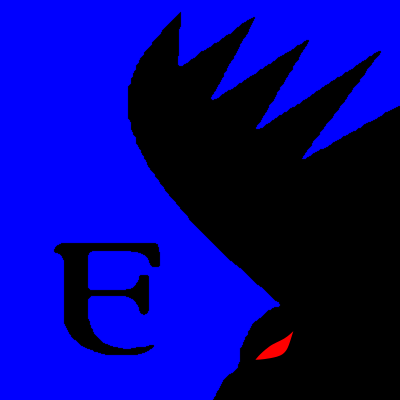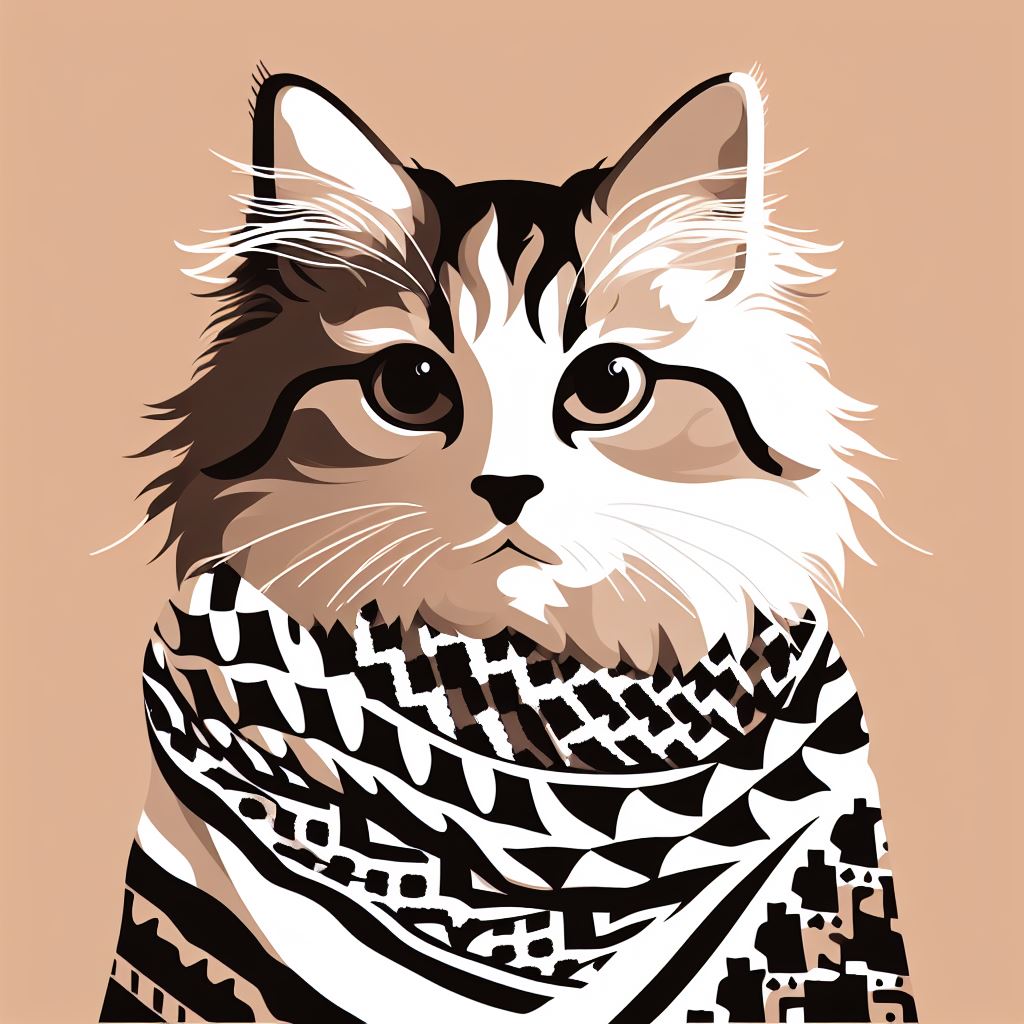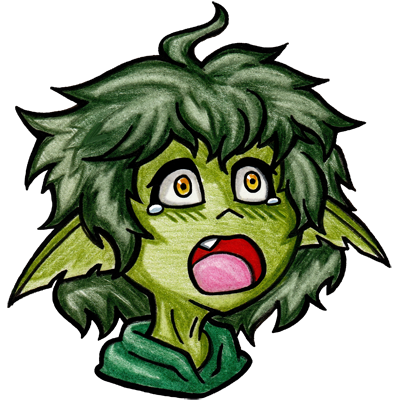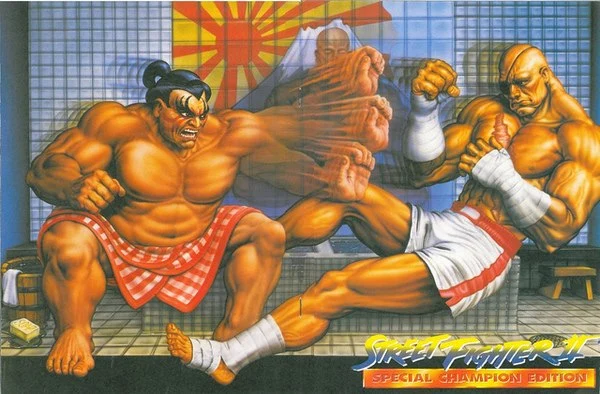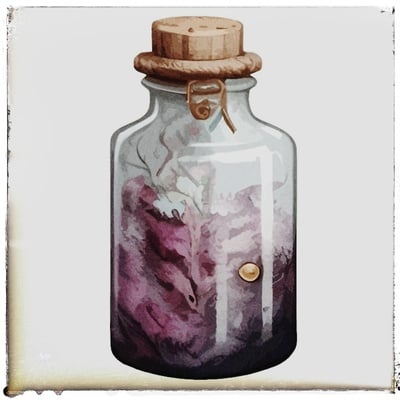Don’t humans have the ability to fuck everything? It’s why half elves and half orcs exist, but no non-human hybrids.
Ah, good old Book of Erotic Fantasy. It’s so gloriously stupid that everyone should own a copy. That table is by far not the silliest part of the book.
It’s only bested by the official sex rulebook for The Dark Eye, which is an April Fools joke that spiraled out of control and has actual rules for intercourse – deliberately bureaucratic and unsexy ones included purely as a “you asked for it” joke at the reader’s expense.
At first I read this as “these species can fuck each other”. Then I realized that this is only concerning conception, all these species could fuck each other as they please.
Y or M means you can fuck that species. N means you can fuck that species without protection.
No way would I fuck a bugbear without some sort of protection…
If it applies to DnD’s cosmology, than it has to mean with viable offspring, because half-dwarves canonically exist in the Darksun setting and they’re called Muls.
Half dwarves exist in the default rules, they’re just indistinguishable from dwarves. Supposedly they’re actually pretty common.
Honestly, Elder Scrolls has it right: the offspring of two different races will always be the race of the mother, but with some traits of the father.
None of that funny crossbreeding stuff, just keep it simple.
So basically your mitochondria decides your species?
Personally I like keeping it a little more complicated. It’s the same race as the mother, unless the mother is a ditto, in which case it’s the same race as the father.
dryads reject lizardfolk and only lizardfolk
By this I’m assuming lizard-folk lay eggs.
Dragons and Nymphs
don’tfuck around. Got it.How do you fuck a dragon?
With a car
This is the truth they don’t want us to know.
You’re thinking of dragons. Humans only have the ability to fuck elves, orcs, and dragons.
Depends on the setting, some have other half species
Found the bard. ^
One day I’m going to play an asexual bard, just to subvert expectations.
Technically it implies that all these other races are diverged near humans, humans being relatively unchanged remain close enough to produce viable offspring, but with different non human races being diverged from each other to the point of non viability.
So basically the racial map for a D&D setting would have humans at the center, with half children in each of the spokes of a wheel, and every non human race being nodes located in the environment where they developed in extremity, and then from there you can build the environment under the premise of the conditions that developed elves or dwarves or orcs from the human starting point.
This would also have to include a backstory spanning tens of thousands of years.
Is a half halfling a quarterling?
And half a quarterling is a sixteenthling, just like music.
Why wouldn’t it be?
well it depends on what the half in halfling is. if they’re half human already they could be three-quarterslings which doesn’t roll off the tounge very well.
Alternative: humans were specifically engineered to be able to half-breed with anything - even elemental beings - so that they’d be able to take over the world.
Too close to great replacement theory to be campaign safe IMO
You sure? I believe I remember there being a story about a halfling or a gnome drinking an enlarge potion or two to get hot and sweaty with some giantess.
Imagine being the halfling-giant and you’re just some normal guy.
You’re gonna have big feet no matter what
You know what they say about big feet…
Do they fuck everything, or get fucked by everything? How that half orc came into existence wasn’t a good time for everyone.
How that half orc came into existence wasn’t a good time for everyone.

Haha, unexpectedly wholesome!
Vumans get a feat, which is arguably one of the strongest abilities. Base humans are notoriously weak though.
Base humans are generalists, which by their nature won’t have something specific that stands out. +1 to each stat and I think an extra skill is nice if you like not being terrible at anything. Not great at anything is a tradeoff that other races don’t have though…
Don’t humans get two extra proficiencies to represent their adaptability and quick learning?
Boooooring
Boring AND conceited. I always roll my eyes at this trope of “unlike all these different fantasy beings that are good are specific things, we can be good at everything”. Seems like imagination falling short, that other beings would not have their own breadth of possibilities, and humans wouldn’t have their own unique advantages that are particular just to them.
If I had to pick one thing, it would probably be something teamwork related. Humans are very social beings compared to other animals.
Especially given humans have real standout traits like being endurance hunters, somewhat rapid scarring and a high resistance to shock (advantage on constitution checks?)
Everyone’s an endurance hunter in DnD.
There is legitimately an issue in all fantasy games where designers build a rich diverse setting with many different races that have their own exciting cultures and designs and differences, but if they include “human” about 50% of players choose human. This persists through boardgames, RPGs, videogames and LARP. The exact proportions vary a bit from game to game and from playerbase to playerbase, but it’s very common.
Larian revealed some stats a while back for BG3, about 50% of players chose human, elf, or half-elf (the three most “human” looking races". If you choose one of the existing characters to play as, Gale is the most common. It’s an encouraging result, there’s more diversity in the picks for BG3 than most other games, but it’s still very “human” skewed. Halfling, Gnome and Gith were much less commonly picked.
If you’ve been tabletop gaming for a long time, your instinct is to think things like “but why would anyone play as a human? that’s boring!” or “I play these games for escapism and I want to play as something different to myself.” or the like, but the reality is that there’s a very large cadre of players who want to create characters or avatars that are “like them” - they want to self-insert, or they want to pretend they are their character, and have difficulty squaring that with being a gnome or a goblin or a Dragonborn.
As such, you can get this weird disconnect between your setting writing (where there’s a large variety of different, interesting races in the world) and your playerbase (majority human) which skews your design towards a human-centric viewpoint that you don’t necessarily want - especially if you put work into the design of cultures of other races, and you want players to explore a variety of ideas and styles.
So what’s the solution? - a common design solution is to mechanically incentivise players to choose outside of human, by giving humans disadvantages, or giving other races unique advantages that are desirable. Is this the right approach? your mileage might vary, but it’s one of the easiest “patches” to encourage diversity in the playerbase, so it’s a common choice.
Does 5e do this? probably not - human is very mechanically powerful, especially at low levels where the variant human feat can make a big difference… but they did make humans more “boring” than the other races, hopefully encouraging more dragonborn and gnomes and half-orcs and so on.
and your playerbase (majority human)
The 3 dogs and 2 cats out there playing BG3: “Finally! Some recognition!”
Well in my case I like the idea of interacting with those wonderful and fantastical species, not being one of them. I am no traitor to my own species. Smh
I honestly don’t see why people picking humans is an issue, just let people choose what they prefer.
I tried to explain in my post, let’s go again.
Imagine you, as a designer, have put a lot of effort into making an interesting cosmopolitan setting. It’s very frustrating when the bulk of your playerbase represent a different reality than the content of your setting. It’s especially frustrating in mass social games (like MMOs or fest-LARPS)
When you have games that are heavily player-driven, the reality of your setting is what the players actually experience, not what you wrote in the setting document. If your intention is to build a complex rich cosmopolitan setting, but then everyone plays humans, they don’t get to experience all the rest of the content you made - the result is you’ve put time and work into designing content that doesn’t get used, and the world you end up with is “oops, all humans.”
If I devote ten pages of my PHB to the culture and habits of gnomes, and then nobody plays a gnome, that’s “wasted pagecount” - RPG books (Especially books like DnD) have limits on the pagecount, and you want all the content you provide to be used. Those ten pages could have been dedicated to something that impacted the table and made the game more enjoyable for everyone.
There’s no issue in the individual case, but I hoped to explain why designers feel the need to encourage people to diversify.
The reality of your setting is what the players actually experience, not what you wrote in the setting document.
I’m gonna expand on this, because I think it’s an interesting thing to consider, and an important lesson for players and DMs alike.
If you, as a player, write a big complex backstory full of important and interesting events for your character, but keep it hidden from the other players - that backstory essentially doesn’t exist to the table. Yes it can affect how you think about your character, but it’s not a part of the collective story until it impacts the table. This can have negative outcomes in roleplay.
If you, as a DM, write a bunch of secret information for your NPCs, but the players never see it, it’s essentially not real to them. If the knights of your city have a super cool wyvern emergency response team, but the players never see it, that detail never existed.
Let’s say, for a random example, that you grew up as an orphan in a dwarf mining colony, and your parents were… not the best. you experienced abuse and discrimination, both from them and the dwarves in the colony. Eventually fled and made your own life elsewhere. You’ve decided to write on your sheet that your character hates dwarven culture, and mistrusts dwarves, and always views their actions in the most negative light possible. Now let’s say this childhood trauma is so bad you don’t want to think about it, or talk about it with your party members. You keep it secret.
Now, let’s say the DM wants to bring this part of your story into the overall story, so they set you on an adventure that involves diplomacy with a local dwarven mine, or they give you a dwarven NPC to travel with the party, or some other dwarf-centric plot. If your character acts “weird” around the dwarves, constantly refusing to trust them, or speaking ill of them, or looking for malfeasance where there is none - in your head you’re just playing to character, and your actions make sense. The other players don’t know your history, so what they see is completely arbitrary prejudice.
To those players, your backstory isn’t a part of the story they’ve experienced or the world until you bring it to the table. Your actions and decisions might not make sense to them, or seem out of character. Your choices might be incredibly frustrating to the rest of the table when they obstruct or interfere what they perceive to be the party goal. Without the context of why your character is like that, their experience of your character is massively different to your own.
Here’s a second example: Your character used to live somewhere far away, they committed a murder, then fled their city, changed their name, and came to (wherever the campaign is set) to start over. They’re ashamed of what they did, and don’t want anyone finding out for fear of being tracked down and brought to justice, so they’ll never tell anyone about it.
Now let’s say your DM is running… Dungeon of the Mad Mage… a mega dungeon plot where the characters go into the dungeon, then fight their way through monsters until they’re level 20, and never see civilization. They never have an opportunity to bring your secret to the table and make it part of the story. Or let’s say they’re just busy with other plots and forget.
This backstory detail might be important to you - but the other players never see it. From their perspective it never happened at all, it wasn’t part of the narrative, it’s not an extra dimension to your character, and it’s not an event that happened in the world - they just don’t know about it… so it’s not real from their perspective.
Now, I’m not advocating against characters having secrets, or DMs having intrigue in their plot that drives outcomes without the players seeing it directly. If you want depth in your storytelling, it’s important to have flaws and phobias and secrets, and opportunities for your character to grow and all that good stuff.
What I’m saying is, if you have an important secret that you haven’t told the other characters, it can be worth thinking about what your character is doing from their perspective. What does it look like to a person who doesn’t know your secret? Where are the differences between the story you’re telling yourself, and the story you’re telling them?
When designing “hidden content” consider what circumstances might cause your character to reveal their secret. If your intention is to keep it hidden for the whole campaign, then think about what that does to the collective story.
This lesson is especially important for DMs, because it’s so easy to devote hours and hours of planning to things the players might not discover. It’s often important in your story design to have things going on that the players don’t know about, so they can unearth them. Mysteries need secrets… but when planning your campaigns, always consider the questions “when do the players learn this?” and “how do the players learn this?” because until they do, it’s not a part of their world,
I get your point about creators wanting to show off and have all of their creation explored, but at the end of the day, if you are creating something for a user base, what matters is what the users are interested in.
The vast minority ever bothered to learn a single word of Sindarin, but I doubt Tolkien ever cared. You got to figure out if you what you’re making is for your own interest, or others. Calling it a problem that most people prefer the playing humans seems misguided.
If a creator wants players to explore their work and everything they’ve build, and players aren’t doing that, this is viewed as a problem by the creator.
That’s not misguided, their hard work is going to waste. It makes sense for them to explore ways to encourage people to try new things.
It just sounds like the creator made a thing that wasn’t what people wanted.
It just feels like the question to ask then isn’t “but how do I get them to choose the thing despite it not being what they want?”
“Hard work goes to waste when you make a thing that people don’t want” is … true. But I would say it’s a stretch to call it a “problem”. It’s just an unescapable reality. It’s almost tautological.
Look at houses. You made a village with a diverse bunch of houses. But more than half of those, nobody wants to live in. Then “how do I get people to live in my houses?” “Build houses that people actually want to live in.” Like, you can pay people money to live in your weird houses, sure, I just feel like you have missed the point of being an architect somewhat.
It’s misguided in the sense it’s not a real problem for the target audience. BG3 does not have a problem of players not choosing the more exotic races. Maybe some game developers are annoyed about it, but it’s not something that devalues the game. The option is still there for those who wants it.
If you as a creator see that your players are only interested in 20% of the world you have created, you might want you reflect on why that is, and if you’re not better off focusing on those 20%. If you don’t want to do that there’s nothing wrong focusing on the more obscure fluff for own personal enjoyment either. And I really don’t see the point of downvoting all my replies, I’m not trying to argue in bad faith.
I’ll try to explain it again:
If you create a setting where a core part of the setting is that there’s all these different races interacting in a rich, vibrant, cultural melting pot, but all your players choose to play humans, then you have a complete mismatch between the setting you created, and the experience the players are having.
This is a problem.
It’s not a problem that “players are doing what they want”. The problem is that the reality of your game experience is fundamentally different to the setting design you’ve written. You have a setting document that says one thing, and a playerbase experiencing something different. The disconnect might seem trivial or unimportant to you, or you might not care - but the result is that your setting document is fundamentally inaccurate to the reality of play.
For a designer, this is a problem.
BG3 is a single player RPG where an individual player can make whatever decision they want and experience the game the way they want to play it. I’m not trying to claim this specific problem is an issue in BG3. The only reason I brought that game up was that they publicly released statistical data on millions of players, so it gives good data for the proportionality of player choices.
For most tabletop settings, this isn’t (usually) a major issue - a character party is typically on the order of 4-6 players, if they’re all humans, that’s fine. It’s the duty of the DM to make sure that the NPCs and the setting are accurate if that’s a thing they care about. It can be a problem if your game is fundamentally about exploring these different perspectives, which some indie-RPGs are focused on.
This is mainly an issue in large-scale social play games, like MMOs and Fest-games, which can easily result in this disparity between setting design and play experience.
There’s also an issue where fantasy fiction can’t get away from this idea of fantasy “races” with “cool powers”. It adds this additional layer of representation that needs to happen when it’s already difficult to make real human cultures and groups feel represented in a game without infinite NPCs or world-building. Humans tend to be one or two cultures and the other “races” get coded as others. Most games would be better off without including the unquestioned trope of “fantasy races” (yes, D&D included) unless they actually built their setting and game around the idea (which most have not).
There is an advantage of “baby’s first introduction to the idea that different peoples can have different cultures, and they’re all valuable.” - for some people they’ve never experienced or ever thought about this… and it’s “simpler” to grasp than (the much better design) of different regions having different cultures, and each region having a mix of races.
On the other hand, there’s a massive disadvantage in portraying “all people of this race are (stereotype x), all people of that race are (stereotype y)”
DMs and GMs, this is a place where you can shine with your worldbuilding. Make towns that have a mix of races, and give towns their own culture. It’s worth it and much more immersive.
Humans get to slowly raise the temperature of the world over 100 years until it causes a mass extinction event. It’s very effective.
“Parry this, you filthy casual!”
It’s called playing the long game, maybe look it up. You may have won the campaign(s), but I won the multi-generational war.
I think that win was a pyrrhic victory
I think your mom was a pyrrhic victory.
Ladies and gentlemen, we got 'em.
Humans get privilege.
Careful, you’ll trigger their human fragility.
Humans in OneDnD have an insp point they can toss on shit now which is pretty cool, feels like an embracing of the trope that humans will act as a glue that can bridge cultural differences between other races.
Most races get more darkvision
Half-lings get more luck
Dragonborn get more breath weapons
Humans get more
Humans max out their primary at level 4, most op racial ever
Their primary what?
Ability score, although a couple of species can also do that
Human’s superpower is being the stand-in privileged class.
Variant Humans get to choose their own ability.
They get an extra foot.
Humans get to…(checks literary notes) not be genocided by other humans, until the xeno menace is destroyed.
Only in fantasy humans get to not be genocided by humans
That’s because in real life we don’t have any other sentient beings to genocide. There’s animals we can extinct of course but it’s just not the same :(
Not so sure. When it comes to human hatred, big differences, petty differences and made-up differences work just as well as one another to motivate atrocities. Elves and aliens would end up on the list, but I don’t think they’d hold us back from being awful to ourselves. Ultimately there’s no real logic, so in what order that would happen is anyone’s guess.
True story. When the colonists showed up in the New World, you think the natives would’ve all banded together against the “alien” threat, but instead the invaders were often able to leverage historic fueds and tribal animosities to get the different groups to help fight each other. I at least know this happened in some instances in South America and Africa.
They have the power of discrimination on their side
Orcs and humans are natural enemies.
Like elves and humans.
Or dwarves and humans.
Or gnomes and humans.
Or halfings and humans.
Or humans and other humans.
Damn humans! They ruined Toril!
You humans sure are a contentious bunch.
You just made a favored enemy for life!
*Or humans and variant humans.
I play mostly d&d 3.5 and pathfinder 1e And I think human is the most powerful race with his free feat level one ^^
Humans should get “All healing received is maximized (ie: treat it as if the dice each rolled their maximum value)” to reflect how humans weirdly bounce back from things that should have been fatal.
In my games this would be called the HFY rule because of how pervasive the trope is in that theme.
How do you pronounce that? “Huffy?”


